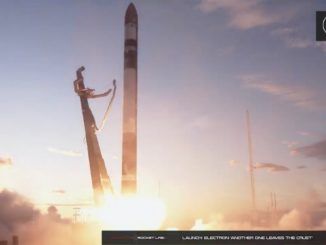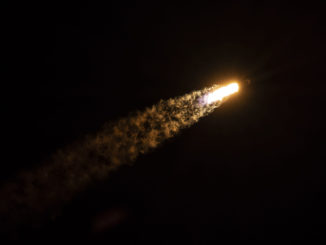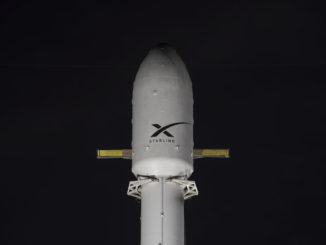EDITOR’S NOTE: Updated at 7:30 p.m. EDT (2330 GMT) with additional details. Updated at 7:55 p.m. EDT (2355 GMT) with new photo. Updated at 8:20 p.m. EDT (0020 GMT) with Bridenstine statement.
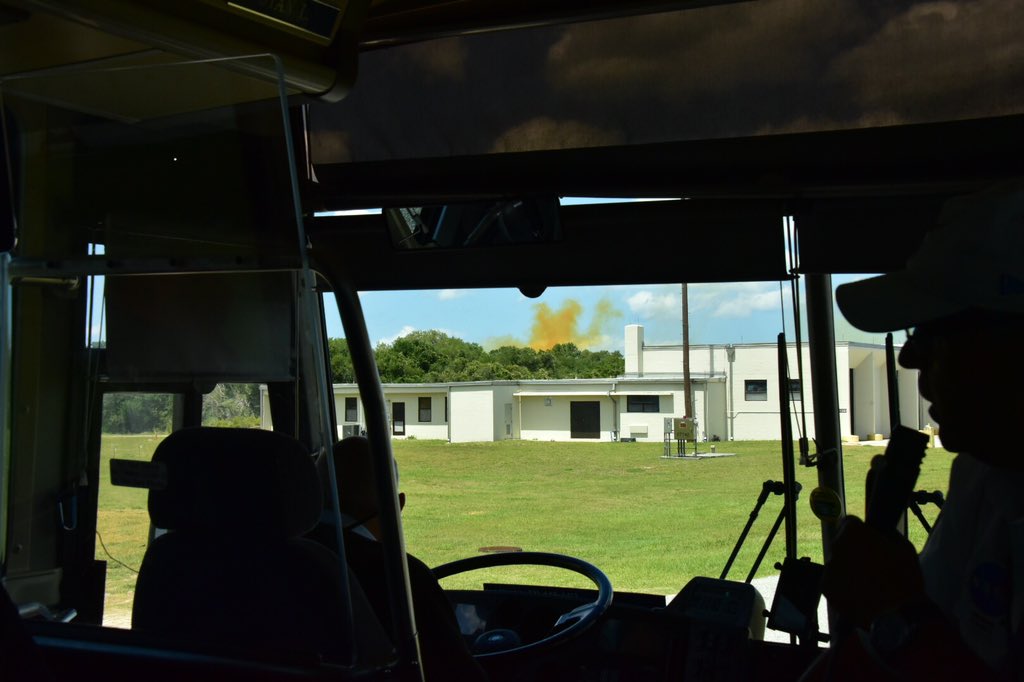
An accident Saturday during an abort engine test on a Crew Dragon test vehicle at Cape Canaveral sent a reddish-orange plume into the sky visible for miles around, a setback for SpaceX and NASA as teams prepare the capsule for its first mission with astronauts.
SpaceX is testing the Crew Dragon ahead of the capsule’s first test flight with astronauts later this year, following a successful Crew Dragon demonstration mission to the International Space Station in early March.
SpaceX confirmed the accident, first reported by Florida Today, in a statement Saturday evening. No injuries were reported.
“Earlier today, SpaceX conducted a series of engine tests on a Crew Dragon test vehicle on our test stand at Landing Zone 1 in Cape Canaveral, Florida,” a company spokesperson said. “The initial tests completed successfully but the final test resulted in an anomaly on the test stand.”
NASA Administrator Jim Bridenstine tweeted that the space agency was notified of the accident.
“The NASA and SpaceX teams are assessing the anomaly that occurred today during a part of the Dragon Super Draco Static Fire Test at SpaceX Landing Zone 1 in Florida,” Bridenstine said in a written statement. “This is why we test. We will learn, make the necessary adjustments and safely move forward with our Commercial Crew Program.”
A photo captured by a Florida Today photographer from a local beach showed an orange plume visible on the horizon in the direction of Cape Canaveral Air Force Station. Such plumes are usually associated with burning or leaking toxic hypergolic propellants.
Florida Today reported that unconfirmed reports suggested the Crew Dragon test vehicle was nearly destroyed, and workers in the area said they heard explosions.
The Crew Dragon’s thrusters consume hygergolic hydrazine and nitrogen tetroxide propellants, which chemically ignite when mixed together. The Crew Dragon’s Draco thrusters are used for in-orbit maneuvers and pointing, while eight larger SuperDraco thrusters — packaged in pairs into four propulsion modules — are used for aborts during a launch emergency.
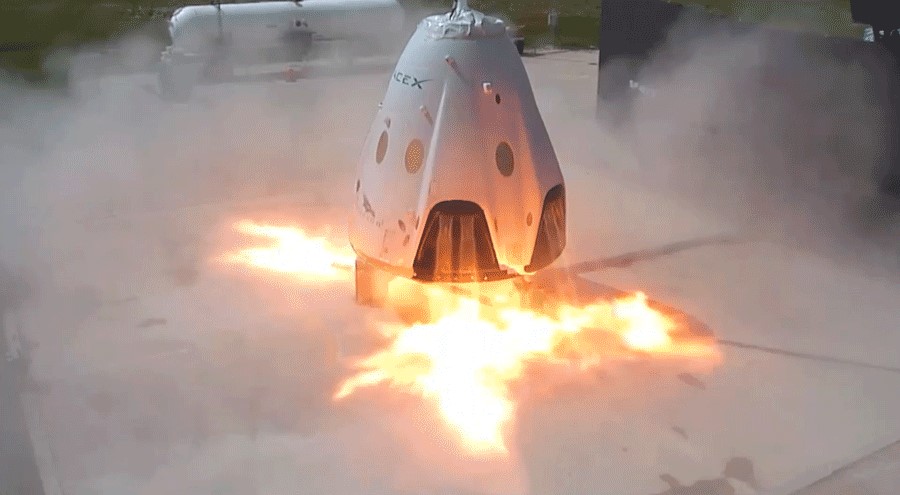
“Ensuring that our systems meet rigorous safety standards and detecting anomalies like this prior to flight are the main reasons why we test,” a SpaceX spokesperson said. “Our teams are investigating and working closely with our NASA partners.”
A dispatcher at the Brevard County Emergency Operations Center said local officials were aware of the SpaceX accident at Cape Canaveral, but were not aware of any risk to the public.
The SuperDraco thrusters are designed to push the Crew Dragon spacecraft away from a failing rocket during launch. Each engine has a 3D-printed chamber and can produce up to 16,000 pounds of thrust, with the ability to restart multiple times.
SpaceX did not specify which Crew Dragon vehicle was involved in Saturday’s accident on the test stand, but people familiar with the company’s test plans said it was likely the same spacecraft that successfully flew to the space station last month. Ground teams returned the Crew Dragon spaceship to Cape Canaveral following its March 8 splashdown in the Atlantic Ocean.
Engineers planned to refurbish the capsule for an in-flight abort test as soon as June, in which the Crew Dragon would activate its SuperDraco engines at high altitude about a minute after launching from the Kennedy Space Center on a Falcon 9 rocket. Hotfire tests of the Crew Dragon’s abort propulsion system, like the SuperDraco test conducted Saturday, were planned by SpaceX before the in-flight abort test.
The high-altitude abort test is intended to prove the Crew Dragon capsule can save astronauts from a catastrophic explosion under the most extreme aerodynamic forces during launch. The test is one of the final tests for the Crew Dragon program before NASA signs off on putting astronauts on the spacecraft.
SpaceX’s first Crew Dragon mission with astronauts, known as Demo-2, was scheduled no earlier than July 25. NASA said earlier this month that it would reevaluate the target launch date for the Demo-2 mission in the next few weeks, and sources recently suggested — before Saturday’s accident — that the Demo-2 launch was likely to be rescheduled for late September or early October.
Veteran shuttle astronauts Bob Behnken and Doug Hurley are assigned to the Demo-2 mission, which was planned to use a new spacecraft.
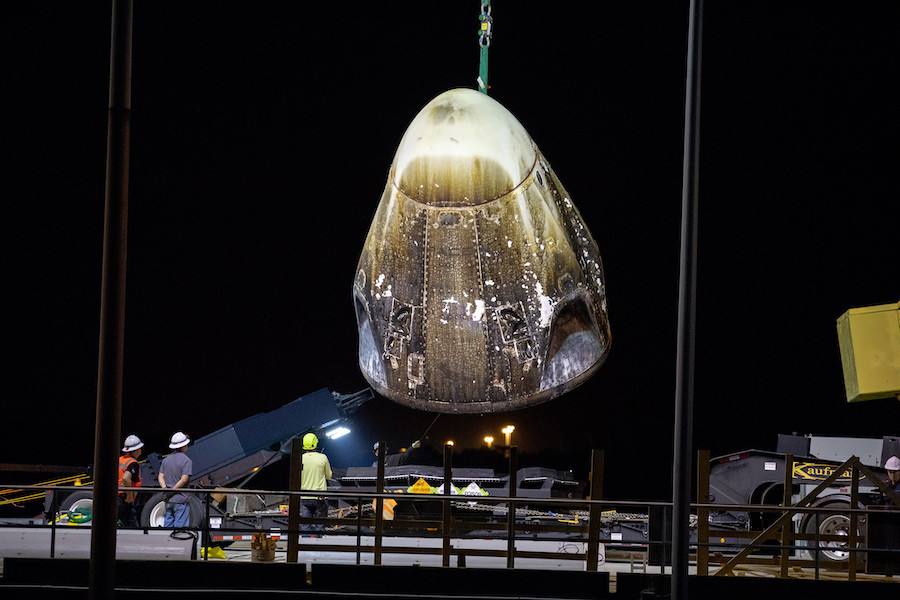
NASA awarded SpaceX and Boeing multibillion-dollar contracts in 2014 to develop the Crew Dragon and CST-100 Starliner spaceships to ferry astronauts to and from the International Space Station.
The first unpiloted flight of Boeing’s Starliner spacecraft to the space station is scheduled for August, followed by a a test flight with astronauts in November. Boeing delayed the Starliner test flights after a fuel leak during an abort engine test on a test article last year forced engineers to redesign part of the craft’s propulsion system.
Once the commercial crew spacecraft complete their test programs, NASA plans to rotate four-person crew to and from the space station, ending the agency’s sole reliance on Russian Soyuz crew ferry ships. Soyuz capsules have carried all NASA astronauts into orbit since the retirement of the space shuttle in 2011.
SpaceX has won a series of NASA contracts totaling more than $3.1 billion since 2010 to develop the human-rated Crew Dragon spacecraft. A similar set of contracts were awarded to Boeing, worth more than $4.8 billion.
Email the author.
Follow Stephen Clark on Twitter: @StephenClark1.

